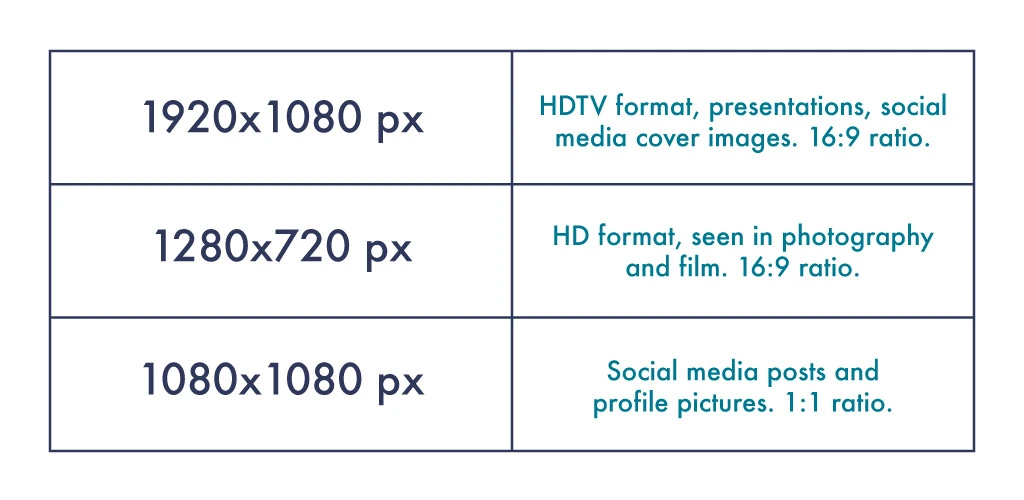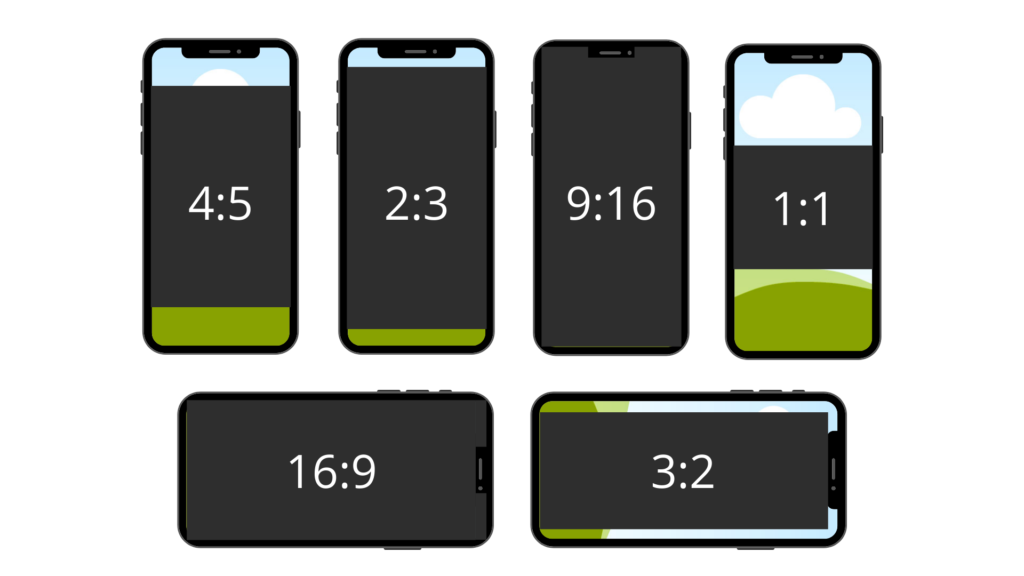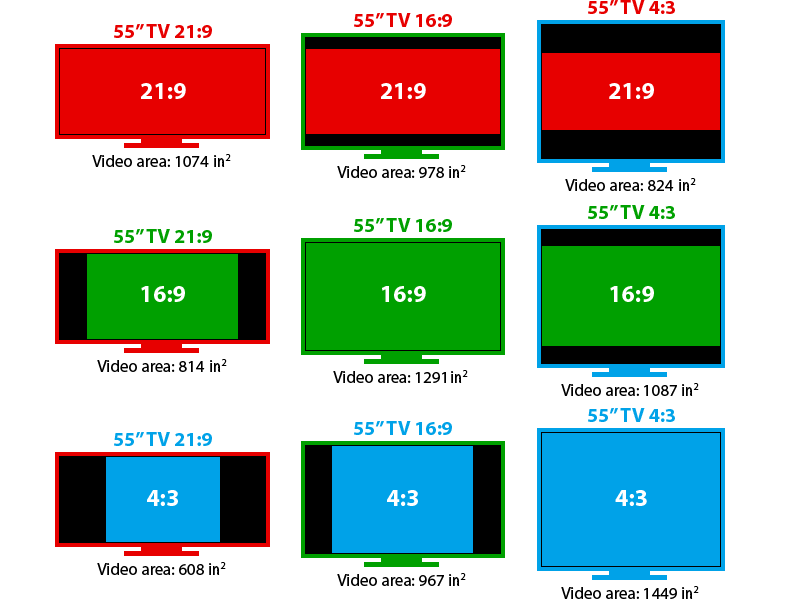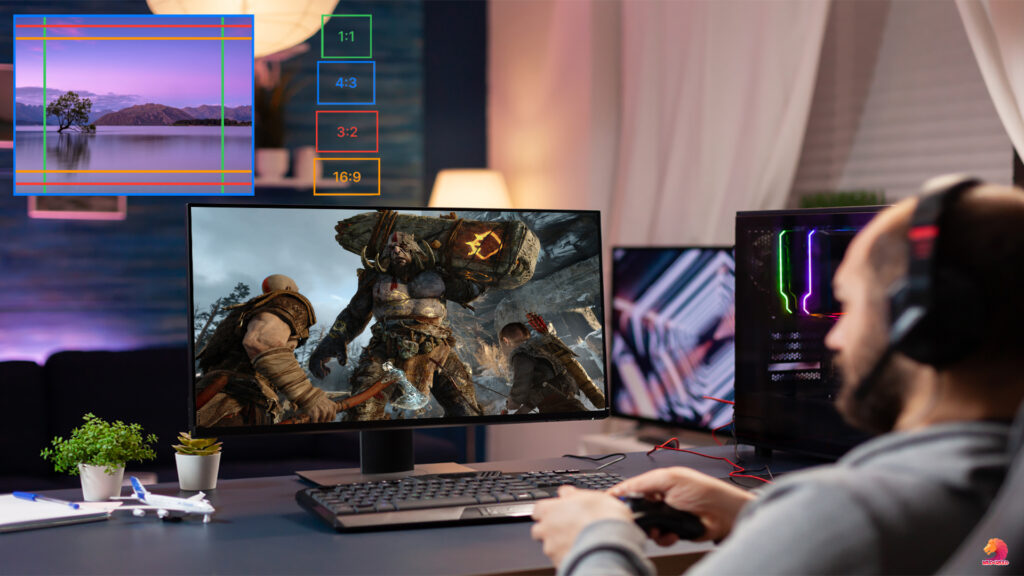In this comprehensive guide, we will delve into the concept of aspect ratio, providing you with a thorough understanding of what it is, why it matters, and how it can impact your viewing experience. Whether you’re a filmmaker, a photographer, or simply someone interested in visual media, grasping the concept of aspect ratio is crucial for creating and appreciating content.
What is Aspect Ratio?

Aspect ratio definition: The aspect ratio pertains to the proportionate connection between the width and height of an image or screen. It is commonly expressed as a ratio, such as 16:9 or 4:3, where the first number represents the width and the second number represents the height. The aspect ratio determines the shape and dimensions of the visual content we encounter on various platforms, including television screens, computer monitors, and movie theaters.
The PlayStation 5 DualSense Edge Controller: 3 Coolest Things You Should Know | Best Gaming laptops for VR
The Importance of Aspect Ratio
Visual Composition and Aesthetics
The aspect ratio plays a pivotal role in the visual composition of any image or video. It can significantly impact the overall aesthetics and how the content is perceived by the audience. Different aspect ratios evoke distinct emotional responses and can influence the storytelling process in filmmaking. Understanding these nuances allows creators to make deliberate choices that enhance the impact and effectiveness of their work.

Device Compatibility and User Experience
With the proliferation of devices and screens in today’s digital landscape, ensuring compatibility and a seamless user experience is paramount. Different devices support varying aspect ratios, and optimizing content for specific ratios ensures that it is displayed correctly and retains its intended visual appeal across platforms. By considering aspect ratio in your content creation process, you can deliver a consistent and engaging experience to your audience, regardless of the device they use.
Common Aspect Ratios
Let’s explore some of the most common aspect ratios used in different contexts:

16:9 (Widescreen)
The 16:9 aspect ratio, often referred to as the widescreen aspect ratio, has become the standard for televisions, computer monitors, and online video platforms. It offers a wide field of view, making it ideal for displaying panoramic landscapes, cinematic shots (aspect ratio for movies), and immersive content. 1920×1080 ratio, this aspect ratio has gained popularity due to its compatibility with modern devices and its ability to provide an immersive viewing experience.
4:3 (Standard)
The 4:3 aspect ratio, also known as the standard or fullscreen ratio, was prevalent in the early days of television and analog displays. While it is less common today, it still finds applications in certain contexts, such as older video games or retro-themed content. This aspect ratio has a more square-like shape, which can affect the visual composition and the perception of depth in the image.
1:1 (Square)
The 1:1 aspect ratio, commonly referred to as a square, is prevalent in social media platforms like Instagram. It provides a balanced composition and is often used for showcasing single-subject images or tightly framed shots. Its simplicity and symmetry can create a visually pleasing experience for viewers.
9:16
The 9:16 aspect ratio refers to the proportional relationship between the width and height of an image or video. It means that the width of the content is 9 units, while the height is 16 units. In other words, if you have an image or video with a resolution of 1080 pixels wide and 1920 pixels tall, it is in a 9:16 aspect ratio. To simplify, you can think of it as a portrait orientation, where the height is larger than the width.
The 9:16 aspect ratio is commonly used in vertical-oriented content, such as smartphone screens, social media stories, and portrait-oriented videos. It has gained popularity with the rise of mobile devices and the increasing consumption of content on platforms like Instagram, TikTok, and Snapchat.
What is the Aspect Ratio of video games?
The aspect ratio of a video game refers to the proportional relationship between the width and height of the game’s display or screen. The typical way to express it is by calculating the ratio between the width and the height. The aspect ratio determines the shape of the game’s visuals and how they are displayed on various screens.

In traditional televisions and computer monitors, the standard aspect ratio was 4:3, which means that the width is 4 units and the height is 3 units. However, with the rise of high-definition displays, wider aspect ratios have become more common.
The most common aspect ratios in modern video games are:
16:9 (widescreen): This aspect ratio is commonly used for most modern games and is the standard for high-definition displays. It provides a wider field of view and a more immersive gaming experience.
21:9 (ultrawide): This aspect ratio is wider than the standard 16:9 and is commonly found on ultrawide monitors. It offers an even wider field of view, allowing for a more panoramic experience.
4:3 (standard): While less common in modern games, the 4:3 aspect ratio is still used for certain retro-style games or for compatibility with older display devices.
It’s worth noting that some games may offer the option to customize the aspect ratio to suit different display preferences or to accommodate specific hardware setups.
Selecting the Right Aspect Ratio
Choosing the appropriate aspect ratio for your project depends on various factors, including the content’s purpose, target audience, and the platform on which it will be displayed. Consider these factors:

Content Type and Purpose
Different content types have specific requirements that dictate the ideal aspect ratio. For example, feature films typically utilize widescreen ratios like 16:9 or even wider formats, while vertical aspect ratios like 9:16 are commonly used for mobile videos or social media stories. Consider the nature of your content and how the aspect ratio can enhance its storytelling or communication goals.
Platform and Distribution Medium
Understanding the platform or distribution medium is crucial in determining the optimal aspect ratio. Research the platform’s guidelines and specifications to ensure your content meets their requirements. Whether it’s a YouTube video, a television commercial, or a social media post, tailoring your aspect ratio to the platform’s recommended standards can maximize its impact and reach.
Conclusion
In conclusion, aspect ratio is a fundamental concept that shapes our visual experiences in various mediums. By understanding its significance, you can make informed decisions when creating and sharing visual content. Consider the purpose of your project, the target audience, and the platform on which it will be showcased to select the most appropriate aspect ratio. Embrace the power of aspect ratio to elevate your storytelling and deliver captivating visual experiences.

